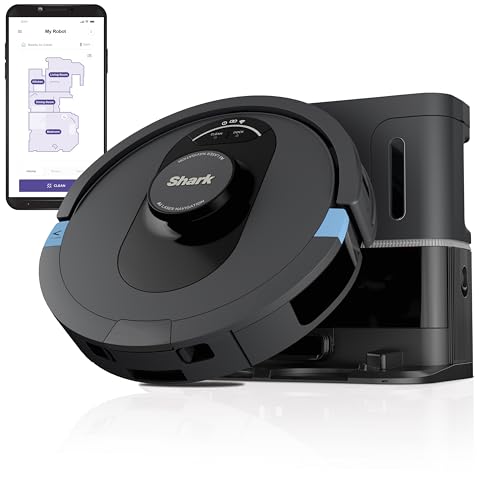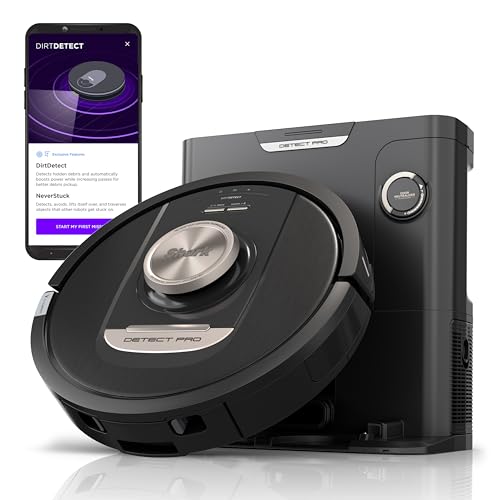Robotic Shark Tools To Help You Manage Your Daily Lifethe One Robotic …
페이지 정보

본문
 Tracking Sharks With Robots
Tracking Sharks With RobotsScientists have been tracking sharks using robots for years, but a new design can do it while tracking the animal. Biologists from Mote Marine Laboratory and engineers at Harvey Mudd College developed the system using components from the shelf.
 It is a formidable gripping device capable of enduring pull-off forces 340 times its own weight. It is also able to detect and adjust its route based on changing objects in the home.
It is a formidable gripping device capable of enduring pull-off forces 340 times its own weight. It is also able to detect and adjust its route based on changing objects in the home.Autonomous Underwater Vehicles
Autonomous underwater vehicles (AUVs) are robots that are programmable and dependent on their design they can drift, move or glide across the ocean with no real-time supervision from human operators. They come with a range of sensors to record water parameters and explore and map ocean geological features, seafloor communities and habitats and much more.
They are controlled by a surface ship by using Wi-Fi or acoustic links to transmit data back to the operator. They are used to collect any kind of spatial or temporal samples and are able to be deployed in large groups to cover more ground faster than can be accomplished by a single vehicle.
AUVs are able to use GPS and a Global Navigation Satellite System to determine where they are in the world, and how far they've traveled from their initial location. This information, along with sensors for the environment that send data to the computer systems onboard, allow AUVs to follow their planned trajectory without losing sight of their goal.
Once a research project is completed after which the AUV will be able to float to the surface and be recovered on the research vessel it was launched from. A resident AUV can be submerged for months and perform regular inspections pre-programmed. In either case an AUV will periodically surface to communicate its position via a GPS or acoustic signal, which is then transmitted to the surface vessel.
Some AUVs can communicate with their operators on a continuous basis via a satellite connection on the research vessel. Scientists can continue their experiments on the ship while the AUV collects data underwater. Other AUVs can communicate with their operators only at specified times, such as when they need to refuel or to check the status of their sensor systems.
Free Think says that AUVs are not just used to collect data from oceanography but they can also be used for the search of underwater resources, like minerals and gas. They can also be employed to respond to environmental catastrophes like tsunamis or oil spills. They can also be used to monitor subsurface volcanic activity and monitor the conditions of marine life, including coral reefs and whale populations.
Curious Robots
In contrast to traditional underwater robots, which are preprogrammed to search for one specific feature of the ocean floor, curious robots are designed to explore the surroundings and adapt to changing conditions. This is crucial because the conditions below the waves can be erratic. If the water suddenly starts to heat up it could alter the behavior of marine animals or even trigger an oil spill. Curious robots are designed to swiftly and effectively detect these changes.
One team of researchers is working on a new Robotic Shark platform that uses reinforcement learning to train an animal to be curious about its surroundings. The robot, which looks like a child in yellow clothing with a green thumb, can be taught to recognize patterns, which could indicate an interesting discovery. It can also be taught to make decisions based on its previous actions. The results of this research could be used to develop a robot that is capable of learning on its own and adapting to changing environments.
Scientists are also using robots to explore areas that are too hazardous for humans to dive. For example, Woods Hole Oceanographic Institution (WHOI) has a wacky robot named WARP-AUV. It is used to search for and investigate shipwrecks. This shark easy robot is able detect reef creatures and discern fish and semi-transparent jellyfish from their dim backgrounds.
This is a remarkable feat considering that it takes years to train a human being to do this job. The brain of the WARP-AUV has been trained recognize familiar species after thousands of images have been fed to it. In addition to its abilities as a marine detective the WARP-AUV has the ability to send topside supervisors real-time pictures of underwater scenes and sea creatures.
Other teams are working on creating robots that have the same curiosity as humans. A team from the University of Washington's Paul G. Allen school of Computer Science & Engineering, for instance, is examining ways to help robots develop curiosity about their surroundings. The team is part of a Honda Research Institute USA initiative to develop curious machines.
Remote Missions
Many uncertainties can lead to a mission failure. Scientists don't know for sure how long a mission can last and how well the spacecraft parts will function or if any other forces or objects could interfere with spacecraft operation. The Remote Agent software is designed to eliminate these uncertainties. It will perform many of the complex tasks that ground control personnel do if they were on DS1 at the time of the mission.
The Remote Agent software system consists of a planner/scheduler as well as an executive. It also has model-based reasoning algorithms. The planner/scheduler creates a set of time-based, event-based activities known as tokens which are then delivered to the executive. The executive decides how to expand the tokens into a series of commands which are sent directly to spacecraft.
During the experiment, during the test, a DS1 crewmember will be available to monitor the progress of the Remote Agent and deal with any issues that are not within the scope of the test. Regional bureaus must follow Department records management guidelines and maintain all documents used in conjunction with establishing the remote mission.
REMUS SharkCam
Sharks are mysterious creatures, and scientists know little about their activities beneath the surface of the ocean. However, scientists using an autonomous underwater vehicle known as REMUS SharkCam are starting to pierce that blue layer and the results are both amazing and terrifying.
The SharkCam team formed by the Woods Hole Oceanographic Institution, took the torpedo-shaped SharkCam to Guadalupe Island last year to monitor and film great white sharks in their natural habitat. The 13 hours of video footage, combined with visuals from acoustic tags that are attached to sharks, reveal much about the underwater behavior of these top predators.
The REMUS SharkCam developed in Pocasset, MA by Hydroid, is designed to follow the exact location of an animal that has been tagged without disrupting its behavior or causing alarm. It uses an ultra-short navigation device that determines the range, bearing, and depth of the animal. Then it focuses on the Shark robot vacuum price at a predetermined distance and location (left or right above, below,) and records its swimming and interaction with its environment. It communicates with scientists on the surface every 20 seconds and can respond to commands to alter its speed, depth, or standoff distance.
When Roger Stokey, REMUS SharkCam developer Roger Stokey, and Edgar Mauricio Hoyos Padilla, Pelagios Kakunja shark self-emptying robot vacuum researcher of Mexico's Marine Conservation Society, first envisioned tracking great whites with the self empty shark vacuum-propelled REMUS SharkCam torpedo, they concerned that the torpedo could cause disruption to the sharks' movements and possibly scare them away. Skomal together with his colleagues, revealed in a recent article published in the Journal of Fish Biology that the SharkCam was able to survive nine bumps and bites from great whites weighing tens of thousands of pounds during a week of research near the coast of Guadalupe.
The researchers were able to interpret the sharks' interactions with REMUS SharkCam, a robot that was recording and tracking the activity of four tagged sharks, as predatory behavior. The researchers recorded 30 shark vacuum mop robot interactions, which included simple bumps and nine aggressive bites.
- 이전글10 Things That Your Family Teach You About Accident Lawyers Near Me 24.09.06
- 다음글Rượu Chivas: Biểu Tượng Của Sự Sang Trọng 24.09.06
댓글목록
등록된 댓글이 없습니다.
